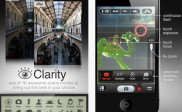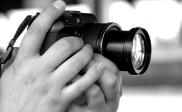Tips for Keeping Your Gear Safe and Clean
Although, they can have a sturdy appearance, your camera and photo gear are extremely intricate devices and can be damaged easily. Your gear is basically prone to 3 kinds of hazards: breakage/crashes, dust, and theft. The following are some tips that can help you avoid these hazards, by simple acts and procedures when using your photography gear. Most of the tips are directed towards, SLR camera users, but still, they can be applied to other kinds of cameras, like compact and bridge cameras.
– Always have a protection filter and a lens hood on.
Consider to always keep a UV filter on every lens you use for protective purposes. The filter will protect the lens glass from dust and it can also protect it in case of a crash or a shock. It’s better to replace a cheap filter than to lose an expensive piece of equipment. The lens hood, like the filter can be really useful in protecting the lens from potential shocks and crashes.

Photo by mcsdwarken
-Avoid changing lenses
Avoid changing the lens as much as possible. Dust easily intrudes the body of the camera and it can be really hard to get rid of it if it settles on the sensor. So try as much as possible to use one lens, especially if you are shooting outdoors. Think of your photographic needs, and mount your camera with the appropriate lens, while still at home. If it happens, that you need to change lenses while being outdoors, be as quick as possible and always keep your camera body facing downwards , to minimize the amount of dust entering.
– Avoid cleaning the lens as much as possible.
Lenses are a very sensitive device, and the quality of the glass can deteriorate even by the act of cleaning. So, if there isn’t a real need for it, avoid cleaning the lens or the sensor and only undertake such a measure when it’s necessary (when the image quality is affected). When cleaning the lens, try to just use a blower first and if it doesn’t work, use a lens tissue with a drop or two of lens cleaning liquid. If there is dust on the camera sensor, don’t try to clean it unless you know very well what you are doing. Get your camera to a specialist, instead, and the dust on the sensor will be removed without any risks.
-Be aware of incompatible flashes:
Don’t mount any external flash units on the hot shoe. First investigate to see if the flash you are using is compatible with your camera. Sometimes flashes have a voltage higher than the voltage supported by the circuitry of the camera and mounting it on the hot shoe or via a sync cable will cause a permanent damage to the camera.
-Always, wear a neck or wrist strap.
A neck or a wrist strap will ensure that the camera doesn’t slip away from your hands and crash on the floor. So unless you are using a tripod, don’t forget to always use the camera strap.
– Get a solid bag with lots of padding.
A good camera bag is the only way to protect your gear from many dangers when moving around or traveling. A good camera bag will provide the support needed to avoid any accidents.
-Don’t get robbed.
Most of the time if your gear gets stolen, it is because you didn’t pay attention to it or you drew too much attention to yourself. So, always keep your gear close to you. Don’t leave your camera in your car and when traveling always keep it with you and don’t put it with the rest of the luggage. When leaving it in a hotel, use the hotel’s safe. Also, when shooting in a foreign country, try not to look too much as a tourist. Carrying the camera all day around your neck with a big camera bag is like telling every thief in there, “hey! I got plenty of expensive gear and I am not from here, come rob me!” So, when shooting in a new place or country, try to be as discrete as possible. You can for instance put your camera in a normal shoulder bag instead of a bulky camera bag. You can also cover the camera brand with some tape and use a camera strap which doesn’t show the flashy brand.
Finally, get insurance. Insuring your gear will guarantee you compensation if any thing happens while you are shooting.
You may want to take a look at How to Protect your Photo Equipment



